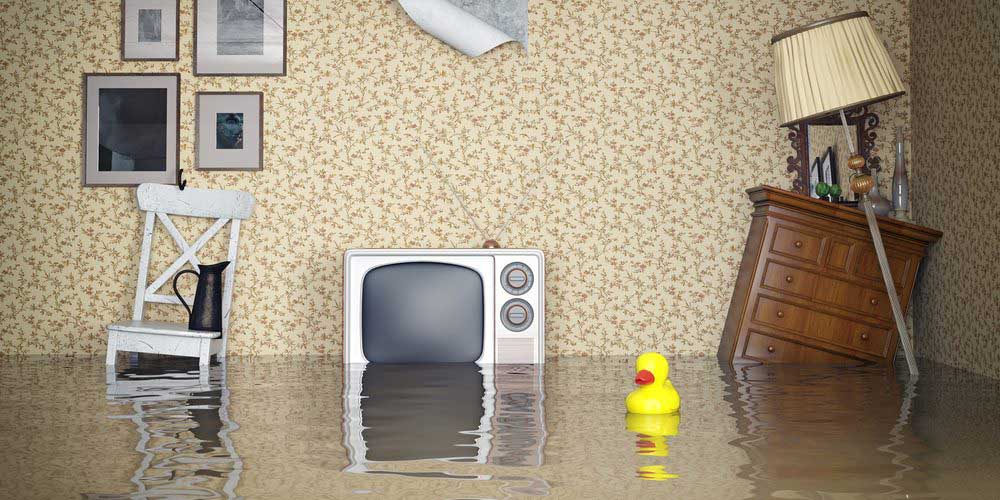1. How Does a Main Line Work?
2. Why do Sewer Backup?
3. What to Check When Your Main Line Backs Up
4. Preventative Maintenance That Could Save You Thousands
5. What Can a Plumber Do?
Picture this lovely situation. You invited all your friends over for a Vegas themed casino game night at your house.
Everyone is having a blast, winning money, and eating great food.
At the end of the night, you walk everyone to the door and smell the most god-awful stench you’ve ever encountered.
“What is that?”, asked a guest.
You look on in horror.
Your friends’ heels are sinking into the front lawn and there’s a pool of fluid bubbling up in your grass, running over your sidewalk. The ladies are shrieking and running to their cars.
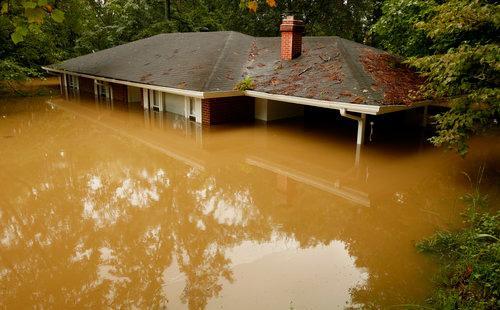
Suddenly, you realize there’s a horrid problem going on. It’s embarrassing, to say the least. More than just being an embarrassing moment. You’re about to foot a BIG bill to fix this clogged sewer on your hands.
How are you going to deal with it?
A main sewer line is not one of the top items that homeowners realize can cause problems in and around their homes.
In order to understand the problem, you first need to look at the basics. This guide will help you understand how a main sewer line works and why the sewer lines back up causing you problems.
It’ll also uncover what you can inspect and check when the main sewer line backs up or has a leak. And when to call for a professional plumber to help.
Lastly, you need to know what types of routine maintenance you can perform. This will help keep your main lines in your sewer system running correctly so you can avoid future problems.
So let’s get started before you get all clogged up.
How Does a Main Line Work?
In your home, you have a main line where all the drains in the house feed into. This drain runs under your home. It connects to the waste water sewer line outside.
Every home without its own septic tank has a main sewer line. This line carries the waste away from your house.
Usually your home has a main sewer line if you live in a municipal area within city limits.
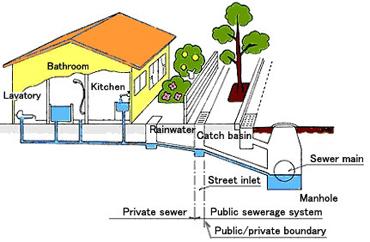
You know you have a sewer line if you pay a water and sewage bill each month.
Typically, there are two types of main sewer lines. The first type is the sanitary sewer line. This carries the wastewater from your house.
Waste water is any water that drains from a sink, toilet, dishwasher, washing machine or shower. The water is carried out to the main sewer system in the street.
Water from this line has to be sent to a waste water treatment facility in your town. It is treated and filtered and then can be released back into the river or lake in the area.
The second type is known as a storm sewer line. This line carries all the water from rain, washing your car and watering your lawn away from your house.
Storm sewers are fed by drains found in your driveway and in the street
Unlike sewage from the sanitary sewer, water from the storm sewer drains directly back into the stream, river or lake in the area.
Normally, most homeowners deal with problems in their sanitary sewer. But in some areas you are responsible for clearing any clogs in this line as well.
This can all be a real headache to fix if you don’t know what you’re doing or don’t hire someone who is certified to handle these issues.
Why Do Sewer Back Up?
Now that you know what a sewer line does, we will move on to why a main line normally gets clogged and stops operating correctly.
Day to day activity can cause a lot of stress on the sewer lines.
From flushing paper, kids throwing toys down the toilet, to pouring food down the sink. It all builds up over time.
It never happens overnight. Before you know it the toilet or sink is backing up leaving your home with a big mess. But that’s just the tip of the iceberg. This usually means the sewer pipes are clogged beneath the home.
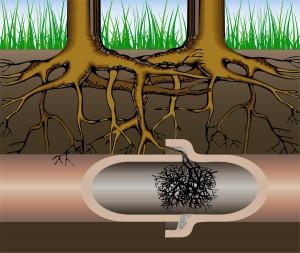
The environment can do some damage also. If you have trees around, roots can bend or even collapse the pipe, restricting flow.
In the Calgary area, one of the primary culprits causing clogged drains is tree branches. When there is a leak in a drainage pipe, tree roots see this as a source of water.
They find the leak and can even sneak through a crack or push their way into a pipe.
These roots may initially cause some minor backups. But the roots can eventually fill the pipe to the point where the water and waste will no longer drain.
No amount of chemical drain cleaners or plunging will fix the problem.
If you’re doing some construction in your yard the pressure from heavy equipment can cause the pipes to collapse.
It’s also a possibility that your pipe may no longer be at the proper pitch (angle). If your main sewer line is not at the right pitch, it can’t drain properly into the sewer system.
Another cause of a clog could be your vent pipe is clogged. A vent pipe for your sewer line goes through the top of your roof.
It is a metal pipe that vents the sewer lines inside your home. This helps the water flow freely to the main sewer line and on to the waste water treatment facility.

For your waste water to drain in the right way, your vent pipe needs to be clear of any debris.
Birds or squirrels can nest at the top of your vent pipe. Dead animal carcasses have also been found in these pipes. These can all be removed, but usually require a professional to do so.
Picture yourself holding your finger over the end of a straw in your drink. The water cannot flow out of the other end of the straw until you remove your finger.
This is the same concept behind a clogged vent pipe. Until that clog has been cleared, the main line cannot drain the sewage from your home properly.
Pipe bellies can also cause serious problems.
A pipe belly in a main sewer line is an area of the pipe that no longer has (or never did have) a positive pitch or has sunk.
A positive pitch or slope allows the sewage from your home to flow out to the sewage system in the street.
A belly will collect some of the waste water as it passes over that area of the pipe. The waste will sit stagnant and begin to build up in the pipes, corroding it.
As the waste water continues to travel over the area, more waste will collect and build up. This will eventually bond together enough to cause a horrible clog.
Clogs that are due to a pipe belly need to be cleared just like any other clog, but new pipe should also be laid to prevent this from happening again.
How do you know which type of clog you have?
Well, that’s the hard part. There is no way to just assume that you have one type of clog or another in your main line.
To figure out which type you have, it takes some exploring.
What to Check When Your Main Line Backs Up
Now you know the different types of clogs you might have. Next I’ll show you how to unclog them.
Again, these problems usually don’t happen overnight. You’ll notice a gradual increase in problems like the slow sink drain or the toilets backing up.
First, you should look for your main line cleanout. It’s usually outside in a plastic or a concrete enclosure that is labeled “Sewer Cleanout”.
If the lids covered with dirt, you’re going to have to dig it out.
These cleanouts look like capped ends of pipe coming out of your home or in your garage.
To start, you’ll need a plumbing snake. One can be rented from a hardware store. But it’s hard work. So be ready to sweat and get dirty!
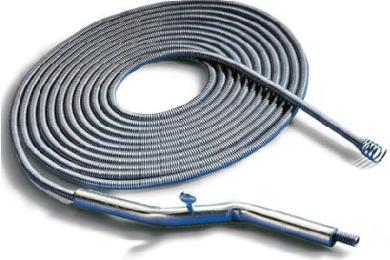
But be careful. You may cause more harm than good.
If you’re not comfortable, call a pro to help.
Insert the snake into the pipe and begin to push gently. If it stops, push a little harder. If the snake keeps going, you may have solved your problems.
If the snake stops and does not move any further, regardless of your best efforts you may have roots blocking the way or a collapsed pipe.
It’s best to do preventive maintenance to stop this from occurring.
You can add a chemical called copper sulfate. The copper sulfate can be used in storm and sewer lines to help slow down any root growth that might be happening in your main lines. But if it’s too late, you’re going to need a professional to come out.
Preventative Maintenance That Could Save You Thousands
There are a few things you can do to prevent these messy situations from happening. But, there are several things you CAN’T do. That’s why it’s best to use a company that offers maintenance packages.
What Can you Do?
The best way to prevent problems is to follow all the rules. Everyone in your home should know what can and can’t be flushed down the toilet or rinsed down the drains.
1. Toilets
- The only thing that should be flushed down the toilet is liquid or solid human waste and toilet paper.
- DO NOT flush sanitary napkins or tampons.
- DO NOT flush baby wipes or paper towels.
- Keep a toilet lock on your toilet lid to prevent small children from putting things into the bowl.
- Buy toilet paper that is marked septic safe.
- Even though you have a sewer, using septic safe toilet paper can help your lines stay clear.
- Teach your children the correct amount of toilet paper to use so they do not use an entire roll each time.
2. Kitchen Sinks
- Put all uneaten food in the trash can.
- Use food traps in your sink to catch food from dishes.
- DO NOT ever pour grease, fats or oils down your kitchen sink.
- Grease turns solid when it cools and will clog your pipes in no time.
- Examples of grease are melted fat from frying, bacon grease, sausage drippings, gravy or even mayonnaise.
- Oils include canola, olive oil, corn oil, soybean oil and other vegetable oils. These are salad dressing, sauces, condiments and cooking oils.
- Fats are things like trimmings from meat, raw poultry skin, cheese, butter, peanut butter, lard and ice cream.
- DO NOT put egg shells down your sink.
- Even if you have a garbage disposal, these egg shells can build up and catch other food. That creates a bad clog in your pipes that is hard to clear.
- DO NOT put fruit pits down your drain.
- These are things like peach pits, plum pits, apple cores, mango pits or cherry pits.
3. Bathroom and Utility Sinks
- DO NOT let hair go down the drain if you can help it.
- Buy cheap hair traps to go in your shower. Then you can throw the hair away after it gets stuck in the trap.
- Use a “zip it” in your drain once every 2-4 months to clear the hair and other debris from the drain.
You could use a drain cleaner to try and get rid of the buildup.
If that doesn’t work, put some boiling water in the drain with some vinegar and baking soda. Then use a plunger to loosen it up. If the clog is still there, it might be time to call a plumber.
What Can a Plumber Do?
The best maintenance for your drains and sewer lines is to have a professional plumber come to your house once a year.
Skilled plumbers who are certified to work on sewer lines will have all the newest plumbing technology.
Cameras and other detection equipment can be used in the drains by a plumber to inspect the lines for clogs. It can also see if there is a collapsed pipe or a pipe belly and if there are any roots growing in the lines.

A plumber will come flush your sewer lines using high powered hydro jetting systems. This clears the lines of any debris that is building up in the pipes.
Clearing the junk out of your lines before it causes a clog can be one of the best ideas. If the plumber does find a problem, they also have the technology to see where the lines need repair.
This means the plumber will not dig up a part of your lawn that doesn’t need to be. Hiring a certified, licensed and insured plumbing technician means that they will fix your system quickly and using the best practices.
